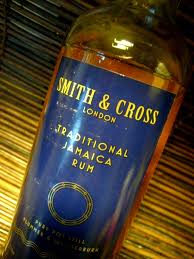
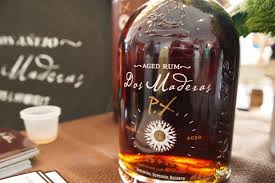
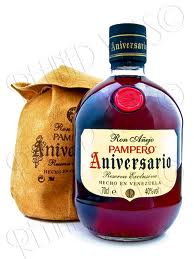
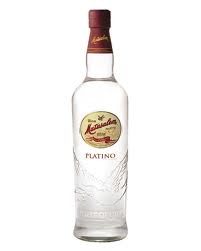






These are the rums I love. Above is the famous picture of the Cubans “liberating” the Bacardi factory in 1959. I am lucky to have a signed copy of the Raul Carrales photo, which I purchased 10 years ago.
Recently I’ve been getting into rum. Although I love single malts, both highland and islay, lately I’m knocked out by the sensuality and variations in different types of rum. Rum is a tropical drink and comes mostly from Caribbean countries.
There is Barbarcourt, 15 year old rum (they spell it Rhum), made straight from sugar cane in Haiti with no molasses, which is unusual. A Frenchman from Cognac, France, started this company in the 19th century. It’s a smooth dark rum.
I also love Matusalem from the Dominican Republic. I prefer the dark, but there is a light version too. I think the dark is one of my two current faves.
Then there is Smith & Cross Traditional Jamaican Rum. a fabulous, perfumed dark rum. This is my other current fave.
Bacardi is the classic Cuban rum, which moved from Cuba to Puerto Rico after the 1959 revolution. I have a great photograph by Raul Carrales of los barbudos (the bearded ones, as Castro’s troops were called, because they all had beards) riding along after requisitioning the Bacardi factory, which is ironic because the Bacardi family supported the revolution.
The Scarlet Ibis is a smooth, dark Trinidadian rum.
Pampero is Venezuela’s great rum, and many consider it the best of all rums.
10 Cane is an inexpensive Trinidadian light rum, great for cocktails.
Finally, there is Dos Maderos from Spain, thus named because the rum is aged in two different madera casks.
Rum is less $$ than single malt. It is more lush and viscous, coats the throat with warmth and goes down slow. It is for sipping, though when I was in Cuba years ago and the rum bottle came out, there were medium-sized glasses that were filled up half way and everybody around me–at 1 p.m.–downed each glass in about a minute or two, then got refills.
Perhaps I like rum because it comes from countries whose music I love: reggae, Cuban, salsa, merengue, calypso and soca (soul calypso), and so on.
Let’s not forget that the Boston Tea Party was not about tea, it was about rum. The colonists preferred French rum from Haiti but were heavily taxed by the Brits, who wanted to sell their own Barbados and Trinidadian rum. In protest the tea got dumped into Boston Harbor, but the whole fracas was about rum, not tea.
Finally, I want to recommend a wonderful little book, Six Glasses that Changed the World. Rum has a nice chapter. The other glasses are coffee, tea, wine, beer, and coca-cola.
When I first lived in Paris, waaaaay back in 1970, a Stanford chum of my father who lived in the toney île st. Louis area of the 5th arrondissement, took me out to dinner at a very nice area restaurant. I was going to the Sorbonne, living in the Latin Quarter, and didn’t have much money. I ate couscous and gros sandwiches tunisiens at North African restaurants: lots of food for not much money. So this night was very special.
We ate a three-star meal, washing it down with lovely bordeaux. When we finished, I politely asked the waiter for a doggie bag. “Garçon, est-ce que vous pouvez me donner un petit sac pour le chien”. He stiffened and frowned, saying “ça ne se fait pas ici, monsieur” (“that isn’t done here”). And so I had to leave the leftovers at the restaurant, probably so one of the employees could take it home to his or her dog. A pity, because it was wintertime and you could just put the leftovers on the balcony and they would keep just fine for the next day.
The thinking was that you were supposed to enjoy a nice meal out in situ, not try to repeat it at home. French vs. American thinking at work.
And so I read with interest this article the other day. The debate goes on, 40+ years later. Mon dieu.
http://www.nytimes.com/times-insider/2014/11/18/french-doggie-bags-the-backstory/?action=click&pgtype=Homepage&module=c-column-top-span-region®ion=c-column-top-span-region&WT.nav=c-column-top-span-region&_r=0


I just read an article in the New York Times about the outbreak of World War 1 exactly 100 years ago. It brought back memories.
I had a French teacher at USC who fought in the Great War. He used to tear up when talking about it so many years later. He once told us that France lost 60,000 men in one battle.
Driving across Northern France in the 1970s when I lived there, you would see endless fields of crosses.
The war was triggered by a number of blunders. It also ended the Ottoman Empire and changed the map of Europe.
I watched the film Gallipoli alone and got really choked up. I couldn’t go straight home; I stopped by a friend’s home for emotional rescue and support. It was devastating.
Read More →
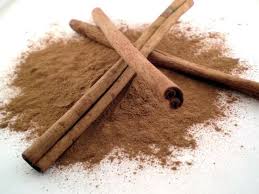


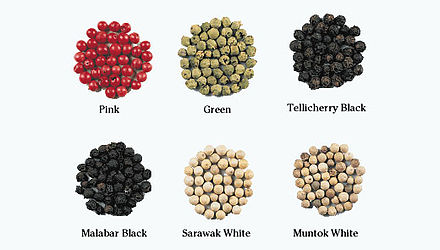
Last night, as I ground black pepper and sprinkled some French sea salt into my salad, I stopped to ponder how we take these spices for granted.
Back in the Middle Ages, before Portuguese, Dutch and other Voyages of Discovery sailed to Indonesia, India, and other places, spices were worth as much as gold and were often bartered for them. Some people paid their rent in peppercorns. The Spice Route was the culinary counterpart of the Silk Route that connected so many countries In Ghana–formerly the Gold Coast–gold was traded for salt. Nutmeg, one of the most valuable spices of all, came from just one small Indonesian island. Cinnamon was also very rare and prized. Spices revolutionized food during the Renaissance and elevated cuisine beyond measure from the bland, tasteless stuff of medieval times. Spices were also condemned at first by the Catholic Church for arousing the senses. We weren’t supposed to take such gustatory pleasure in food.
We take all this for granted now. We shouldn’t. Spices improve our daily lives, are plentiful and. It wasn’t always that way. The book below tells us wondrous things about the history of spices.

A recent New York Times article, “A Quest to Make Gruff Service in France More Gracious” http://www.nytimes.com/2013/08/21/world/europe/can-the-gruff-frenchman-become-the-gracious-frenchman.html?pagewanted=all talks about French waiters’ penchant for being curt and sometimes just appearing plain rude. Then it mentions the Brasserie de l’Isle St. Louis. It also made me think of Yves Montand in the 1983 Claude Sautet movie, Garçon in which the great French actor and entertainer is an aging waiter who still dreams of becoming a singer though working in a cafe most of his life.
When living and working in Paris in the 1970s I would go to the Brasserie de l’Isle St. Louis whenever I had enough money to spend on a nice meal. It was right across the Seine from the flying buttresses at the rear end of Notre Dame cathedral. They served room-temperature brown ale on tap, and I loved their choucroute garnie, their wonderful cassoulet, and in Spring they had a salade called “pis en lit” (piss in your bed), made up of young dandelion leaves, a white vinegar and bacon fat dressing, and thick lardons, thick Canadian-style bacon. So tasty.
I speak French so I never had any questions. But I imagine that French waiters get some pretty dumb questions. “Is the baguette gluten-free? Is there any dairy in the soup?” No wonder the waiters get impatient and gruff. I can’t say I blame them.
Below, a picture of the Brasserie and of Yves Montand. And of the dishes I enjoyed so much there!
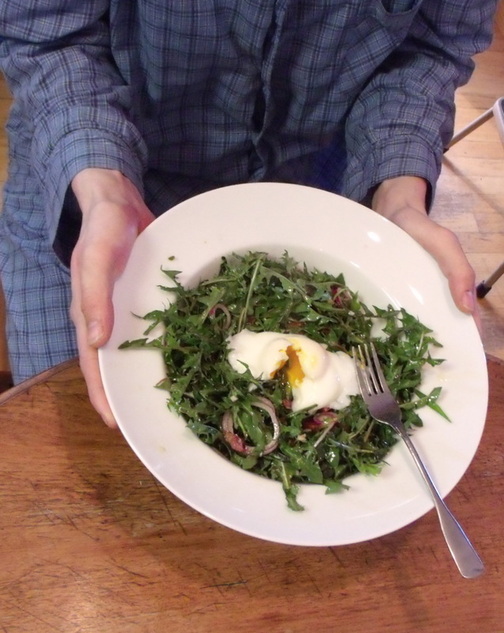



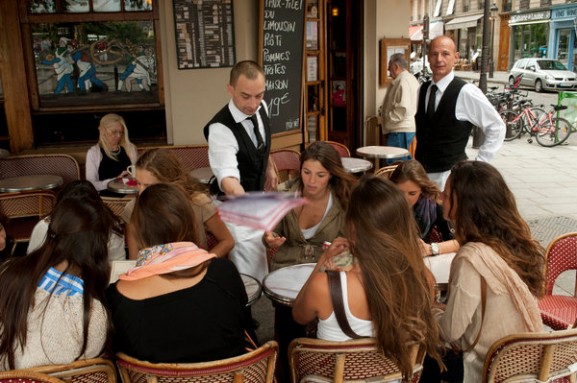

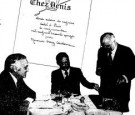

I lived in Paris for several years in the 1970s. Things were cheaper then, five francs to the dollar, but gourmet dining in fine restaurants still was $$$ and out of my reach. I usually ate at North African restaurants, or enjoyed the humble, bland faire at the Cité Universitaire. I nevertheless had vicarious methods of enjoying la haute cuisine Française.
I once read an article about food writer Craig Claiborne winning a big sweepstakes. The grand prize was a ticket for two, courtesy of American Express, to dine at any restaurant in the world. The restaurant chosen was Chez Denis, in the upper-crust right bank area, not far from the Champs-Elysées
http://www.people.com/people/archive/article/0,,20065872,00.html
I remembered this article so when I had to move out of a friend’s flat where I’d been crashing on the couch, I moved into the Hotel Flaubert, right across the street from Chez Denis both because its proximity as well as the fact that I loved reading Flaubert. Read More →
 There was an article about Bacardi Rum in yesterday’s LA Times Food Section that caught my eye. I’m not a mixologist but I appreciate good rum. In Cuba they put it in regular glasses and you drink it straight at room temperature. Which doesn’t rule out going to La Bogedita del Medio to get a strong, fragrant mojito that will kick your ass. But it won’t be with Bacardi. It will be Havana Club, the closest things the Cubans get get to the original Bacardi formula.
There was an article about Bacardi Rum in yesterday’s LA Times Food Section that caught my eye. I’m not a mixologist but I appreciate good rum. In Cuba they put it in regular glasses and you drink it straight at room temperature. Which doesn’t rule out going to La Bogedita del Medio to get a strong, fragrant mojito that will kick your ass. But it won’t be with Bacardi. It will be Havana Club, the closest things the Cubans get get to the original Bacardi formula.
Why is that? Because the Bacardi family escaped from Cuba before the January 1st, 1959 Cuban revolution, taking the famous and secret yeast formula with them. That’s what the LA Times article was all about.
It struck a bell with me because I’m fortunate to have a famous photograph that the great Cuban photographer Raul Corrales–whom even the more famous Cuban photographer Korda called the best photographer in Cuba—of a militia returning from liberating and requisitioning the Bacardi factory. They got everything but the yeast: The most important thing. Read More →


























